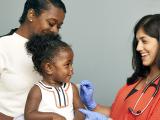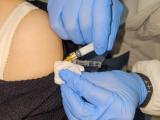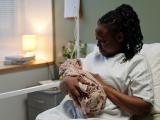Mar 10, 2009 (CIDRAP News) – US public health spending is very uneven from state to state and is eroding in the face of the economic recession, the nonprofit group Trust for America's Health (TFAH) said in a report released today.
State shares of Centers for Disease Control and Prevention (CDC) funds for disease prevention and other public health purposes averaged $17.60 per person in fiscal year 2008, but they ranged all the way from $12.74 for Indiana to $52.78 for Alaska, says the report by the nonpartisan health advocacy group based in Washington, DC.
Meanwhile, state and local public health departments shed 11,000 jobs in 2008, said Robert (Bobby) Pestronk, executive director of the National Association of County and City Health Officials (NACCHO), at a press teleconference on the report today.
"A survey by NACCHO and CSTE [the Council of State and Territorial Epidemiologists] found that another 10,000 public health jobs may be cut in the next year or two," Pestronk added.
Jeff Levi, executive director of TFAH, said overall public health spending, now about $35 billion a year, is about $20 billion short of what is needed.
The report, titled "Shortchanging America's Health: A State-by-State Look at How Federal Public Health Dollars Are Spent and Key State Health Facts," was produced in cooperation with the Robert Wood Johnson Foundation.
Uneven state shares
Levi said about 75% of the CDC's budget is distributed to states and communities. For fiscal year 2008, those allocations totaled $5.35 billion, according to the report.
"It's a tiny fraction of what we spend on treating people after they become sick," Levi said. "Our priorities are upside down."
By region, the Northeast and West received higher shares than the Midwest and South. State per capita amounts averaged $22.49 in the Northeast, $23.94 n the West, $18.43 in the South, and $17.69 in the Midwest.
Levi said that for some programs the CDC just doesn't have enough money to fund every state. "In most cases where states are on the lower end of the scale, it's because there's not enough funding to go around and it's often up to the luck of the draw." For example, he said only 22 states are funded for school health programs.
Because the CDC has limited funds to distribute, it awards some money on the basis of a formula and the rest on a competitive basis, with the result that some states lose out, Jim Pearsol, chief program officer for public health performance at the Association of State and Territorial Health Officials (ASTHO), told CIDRAP News in an interview.
The TFAH report shows that state shares of federal health funding streams other than from the CDC also varied considerably. Funds from the Health Resources and Services Administration (HRSA) ranged from $9.96 for Kansas to $70.75 for Alaska, averaging $21.43 per person overall. The national total for 2008 was about $5.72 billion.
Allocations for hospital preparedness for public health emergencies averaged $1.43 per person but varied from 72 cents for New York to $2.15 for Wyoming, the report says. The money is distributed by the Office of the Assistant Secretary for Preparedness and Response (ASPR) in the Department of Health and Human Services. The total that went to states in 2008 was $361.6 million.
The report also looks at state public health funding and shows wide disparities. It lists median state spending on public health at $33.71 per person, with a range all the way from $3.37 in Nevada to $172.21 in Hawaii. It notes that states allocate and report their budget in different ways and provide varying levels of detail, making comparisons difficult.
Health budget cuts
The report says that at least 46 states are facing deficits in their 2009 and/or 2010 budgets.
Pestronk said the state and local public health job losses last year and additional expected ones will have noticeable effects: "In the face of the Salmonella outbreak, restaurants won't be inspected as frequently as they had been." In addition, surveillance of infectious diseases will be reduced, and officials will sometimes have to decide between immunization and treatment programs, he said.
A national survey of 2,422 local health departments in November and December found that more than half had either laid off employees or lost some through attrition, according to the report. It says that 44% of state health departments have a job vacancy rate of 10% or higher.
Levi noted that the recently passed economic stimulus bill included $1 billion for public health. He said that includes $650 million for community disease prevention, $300 million to expand immunization programs, and $50 million to battle healthcare-associated infections.
"We still don't know the exact nature of the initiatives the administration will plug these funds into," he said. The money will make a big difference, he said, adding, "It's a critical investment but a one-time-only investment."
Pestronk said it appears that the immunization funds may be used mainly to buy vaccines, but NACCHO hopes the money can also be used to hire staff. "With the kinds of layoffs and cuts we've been talking about, the very staff needed to deliver the vaccines are being lost at the same time that funds are being made available to increase the supply," he said.
An analysis by TFAH and the New York Academy of Medicine concluded it would take a total of $55 billion to $60 billion a year, or $187 per person, to adequately fund public health, the report states. Levi said current spending totals about $35 billion.
"Based on the current funding model, the federal government should provide 60 percent of this increase ($12 billion more than fiscal year 2005 dollars) and state and local governments should provide 40 percent of this increase ($8 billion annually)," the report says.
It acknowledges that states and localities will find it tough to increase funding during the current recession, but suggests that they devise funding strategies to implement once the economy improves. Possible sources of new money include taxes on soda, candy, and tobacco products, it says.
State officials' views
David Sundwall, MD, executive director of the Utah Department of Health, said he welcomed the essential message of the report but attached less importance to the state funding rankings. The report lists Utah as 39th in its share of CDC funding, at $15.73 per person.
"Those of us who are state health officials are grateful that there are people looking at this because we're convinced that public health in general is underfunded," he told CIDRAP News. "In my view as state health officer, I wouldn't consider the rankings as useful to me as the message. I'm not going to lose any sleep over the ranking but will use my voice to call for better funding for pubic health, as opposed to medical care and research."
At $2 trillion a year, US healthcare spending has gotten out of balance with the rest of the economy, Sundwall said, adding, "We've got to look at what we're investing in the healthcare complex and get back into things that improve our health, and not just provide services."
Sundwall said he questions the utility of state rankings for health spending. He observed that in evaluations by the United Health Foundation, Utah consistently ranks high for general health indicators, but the state gets "dinged" for relatively low per capita spending on public health.
"While I would welcome more money and we'd spend it wisely and well, I'm not sure it's a fair indicator," he said. "If I were a legislator and I saw our health rankings and some of the success we do enjoy, I'd probably put it into other competing causes."
Sundwall said public health in Utah is feeling the effects of the recession and resulting budget cuts, even though the economy there is better than in many other places.
Last September the Utah Legislature cut $33 million out of the health department's budget, and the new budget the legislature is working on now would take about another $40 million, he said. "That requires me to lay off people. . . . It's a sad, hard time to be a manager and have to go through these retrenchments. But we also acknowledge that in this economy, the public sector has to carry some freight just like the private sector."
Craig Acomb, chief financial officer at the Minnesota Department of Health, raised questions about how fully the TFAH report reflects Minnesota's spending on public health and its share of federal health dollars. The state ranks 40th in CDC funds received, 48th in HRSA funds, and 28th in ASPR funds.
While acknowledging that he hadn't studied the report, he said it probably does not reflect a statewide health improvement program, passed this year, that will provide $47 million over the next 2 years to battle obesity and tobacco use.
Also, he said, "A lot of public health in this state is funded at the local level," with 53 community health boards across the state drawing funds from property taxes. Further, he said the state receives other federal funds for public health purposes not covered in the report, such as Environmental Protection Agency money to protect drinking water.
"Even though we may not get the most money from the CDC, we have some of the highest health indicators in our people, with some of the lowest rates of diabetes, infant mortality, obesity," Acomb said. "We're certainly making effective use of the resources that we have."
Pearsol, of ASTHO, said he thinks the report "resonates well with what the states are experiencing." He commented that the wide variation in CDC allocations to states shows that the CDC itself is underfunded, and added, "It's quite true that the recession is having a devastating impact on general revenue funds in states. . . . Those [public health] job losses are real losses."
"The whole point that TFAH is making is that doubling the investment would be more akin to the need from a population-based health perspective," he said.
See also:
Mar 10 TFAH news release with link to the full report
http://healthyamericans.org/report/61/shortchanging09




















